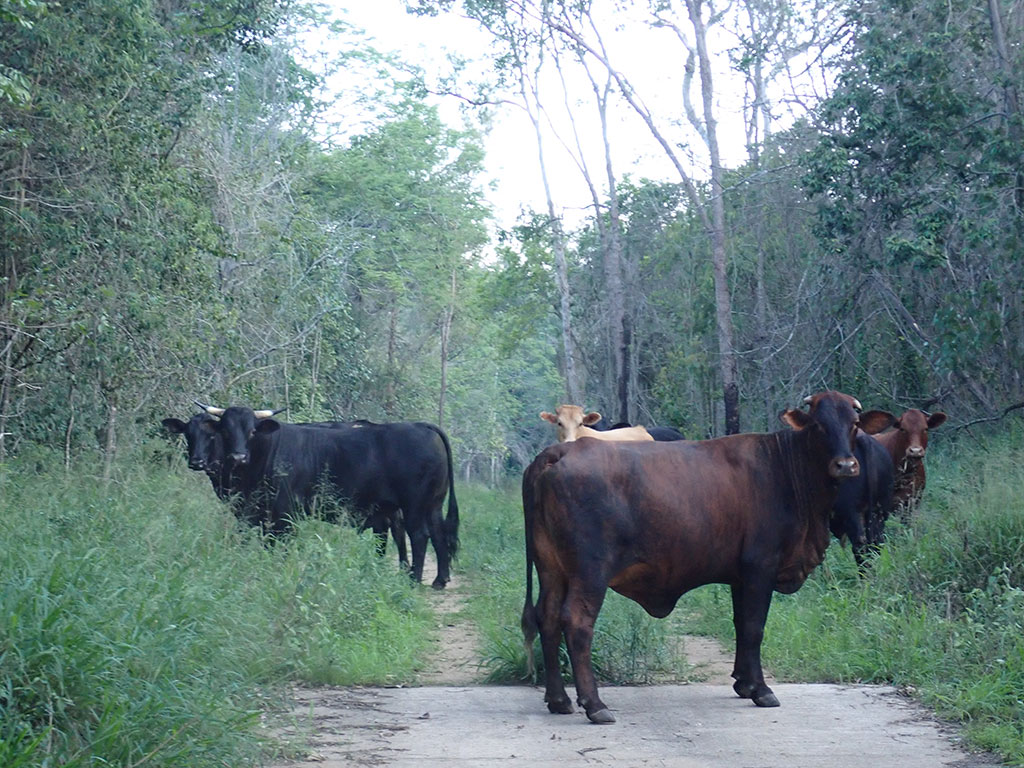Bulburin National Park—Threat management
Protecting habitats from future bushfire
The risk of a future bushfire impacting the recovery of Bulburin nut populations, as well as other wildlife species restricted to their rainforest habitat (such as the ringed thin-tailed gecko), was assessed. A major potential pathway for fire was identified, and an old and overgrown forestry track used to establish a critical 5.9km fireline. This now provides better access for emergency fire response to control a bushfire and protect threatened species and ecosystems from future fires. This is in addition to the annual fire management program that includes planned burns to reduce fire risks.
Controlling pest animals
Pest animals that were identified as primary threats to the post-fire recovery of the priority threatened species and their habitats in Bulburin National Park were cattle Bos taurus and red foxes Vulpes vulpes. These species were targeted for specific control efforts, complemented by the park’s usual pest management program.

The incursion of cattle into Bulburin National Park from adjoining lands presented a significant threat to the recovery of Bulburin nut populations and their habitats. Cattle can forage on, and trample native seedlings and regenerating plants, facilitating the dispersal of weeds and causing soil erosion. These impacts are greater across a burnt landscape and extend to the habitats of all priority species. To exclude wandering stock from the park, a 5.7km fence was built between Bulburin National Park and a neighbouring grazing property. Construction included flood gates and cattle grids with the adjoining landowner agreeing to maintain the fence.
The threat of predation by foxes on the silver-headed antechinus across high altitude open forests and rainforest was of significant concern. Accordingly, control efforts specifically targeted foxes in these areas to support recovery of this threatened mammal species and other wildlife species.
Controlling invasive weeds
Invasive plants that were a threat to the recovery of burnt habitats were prioritised in terms of the risks they presented to the recovery of the priority threatened species.
Exotic high biomass grasses can readily exploit post-fire conditions by dispersing into new areas and expanding existing populations to create dense barriers to natural regeneration, and degrading habitat conditions. Of particular concern were guinea grass, thatch grass, slender panic grass and broad-leaved paspalum. Control of these weeds targeted rainforest habitats for the Bulburin nut and ringed thin-tailed gecko, as well as roads and tracks that served as pathways for new incursions. The shrub weed lantana can also form dense thickets inhibiting regeneration and elevating fire risks. Initial control efforts were undertaken and followed by subsequent treatment in the warmer growing season.
Cat's claw creeper was also a priority weed species, being of national significance and able to quickly take advantage of post-fire conditions to form dense mats and smother regenerating seedlings, shrubs and trees. As a woody vine that can reach up to 30m and establish an extensive, tuberous root system, it is difficult to control once established. A biocontrol agent, the jewel beetle Hylaeogena jureceki, has been approved for use across South East Queensland and was released in Bulburin National Park in collaboration with Bundaberg Regional Council. This treated approximately 32ha and achieved a 25% reduction in the cover of cat’s claw creeper. Ongoing beetle releases will continue to reduce impacts of cat’s claw creeper in rainforest communities across Bulburin National Park.


